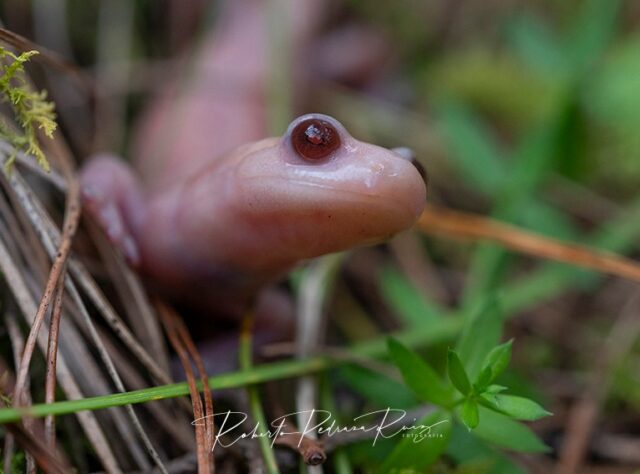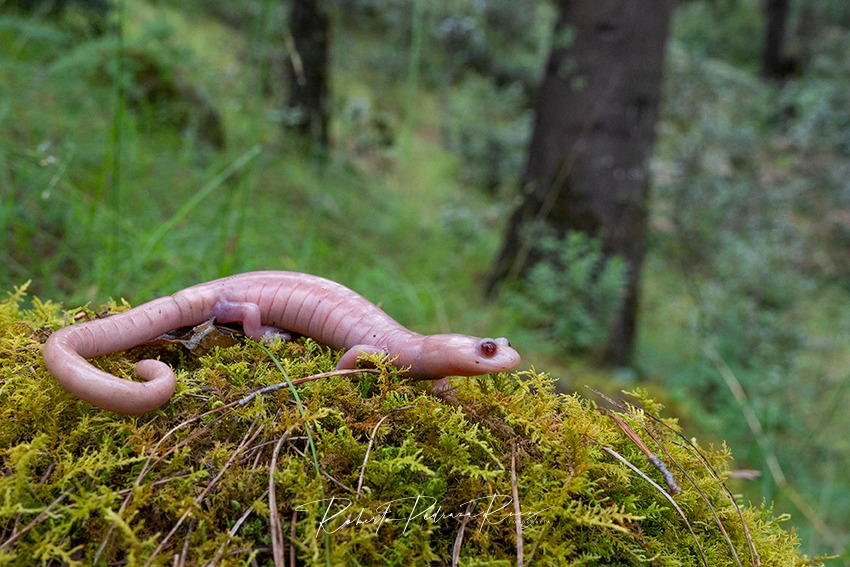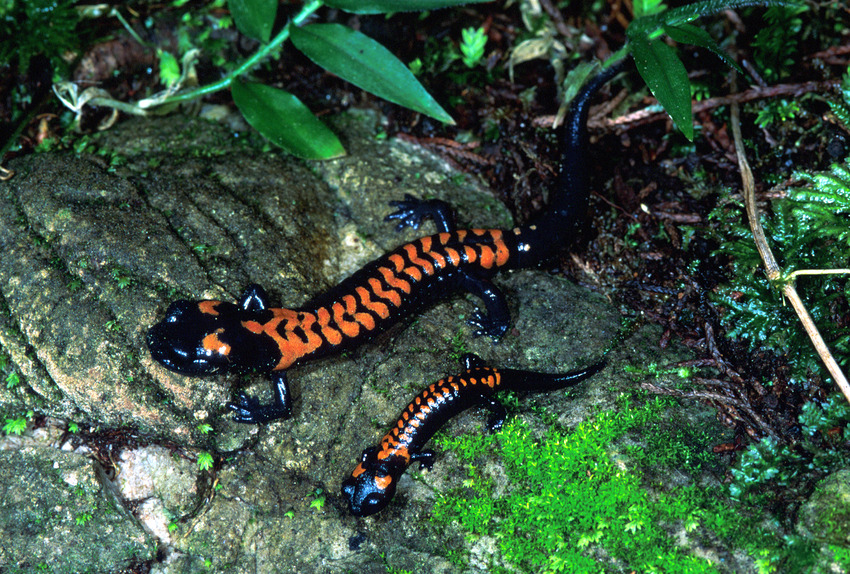
An albino tropical Salamander has been recorded for the first time in Mexico. Credit: Roberto Pedraza Ruiz
A fascinating research paper, which has been four years in the making, has just been published by Roberto Pedraza, Sub-director of GESG, one of WLT’s partners in Mexico. Written by Roberto in collaboration with some friends of his, including Herpetologist Alejandro Calzada, the paper documents the first known record of albinism in tropical salamanders.
This exciting discovery was first made four years ago, when a local teacher found an unusually pale Bell’s False Brook Salamander (Isthmura bellii) on the pavement in Pinal de Amoles, a town in the Sierra Gorda Biosphere Reserve.
The teacher contacted Roberto after spotting the salamander, who rushed to his truck and drove for an hour to photograph it. It was then safely released back into the forest.
Roberto says, “Albinism is scarce (1 person among 10,000 in Mexico) so just the fact of finding an albino salamander is a wonder. In the past year we only found 3 Isthmura belli after an intense search looking for another salamander species with WLT funding. So, to find an albino one is just against statistics. Especially on a sidewalk in a small mountain town.”

After being photographed, the albino salamander was released back into the protected forests of the Sierra Gorda Reserve. Credit: Roberto Pedraza Ruiz
Why is this salamander such a special discovery?
The Bell’s False Brook Salamander is endemic to Mexico, often found at high elevation beneath logs, rocks, brush piles and leaves in the region’s pine-oak forests.
Normally, the species is known for its dark black colour and the vivid orange-red spots along its head, back and tail. However, the albino salamander found in Sierra Gorda lacks pigmentation in its body and eyes, with a light pink colour overall and only lighter pink patches in place of the typical orange spots.

These adult and juvenile Bell’s False Brook Salamanders have the bright colouring typical to the species. Credit: Roberto Pedraza Ruiz.
The research paper notes that colour abnormalities are reported less frequently in amphibians than in any other land-dwelling vertebrates. Although there are more than 400 amphibian species in Mexico very few reports of colour abnormalities exist.
To the knowledge of Roberto and the report’s authors, these are the first records of albinism in tropical salamanders and the first documentation of albino amphibians in general in protected areas in Mexico.
Now, as the number of amphibian monitoring programmes in Mexico increases, future studies can focus on understanding the different subtypes of abnormal colouring in amphibians and whether any conditions, such as reduced eyesight, are associated with it.
Congratulations to Roberto and his fellow authors on such an interesting report which will hopefully pave the way for further study.
You can read the full research paper here, or learn more about our partner GESG’s work in the Sierra Gorda Biosphere Reserve here.

